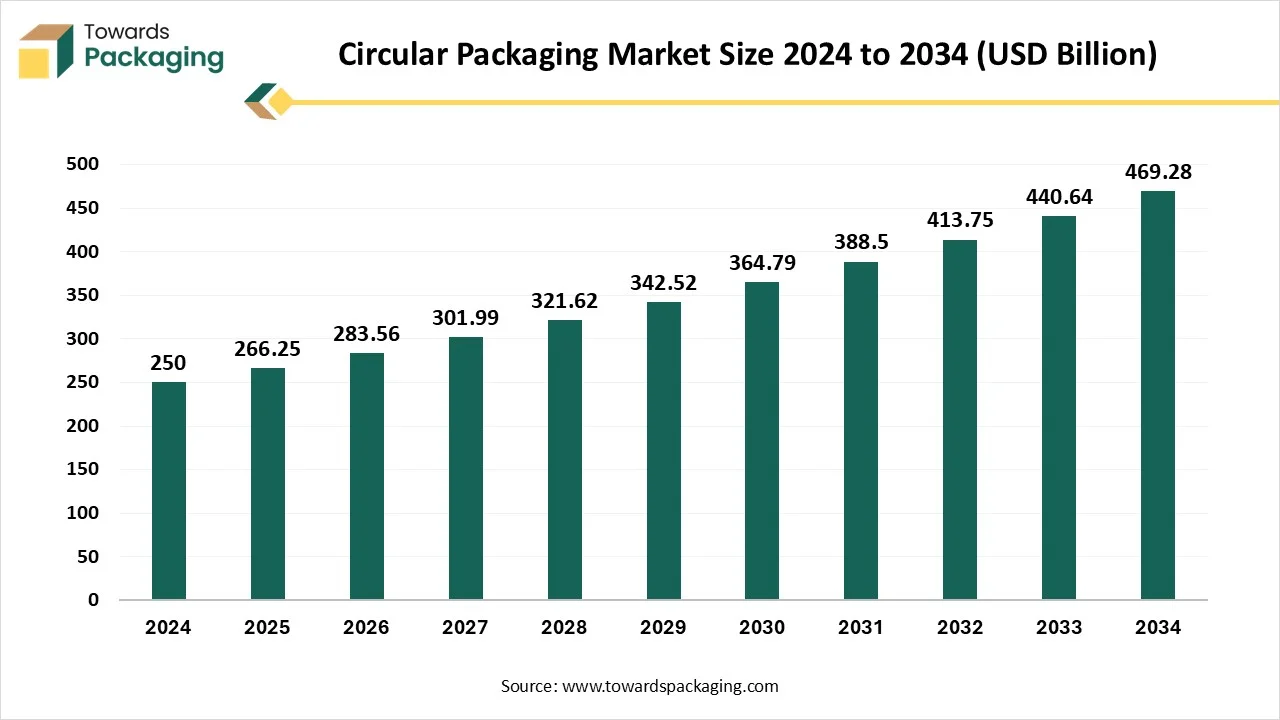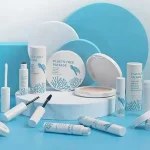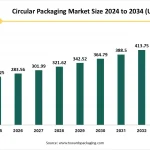The global circular packaging market is projected to grow from USD 266.25 billion in 2025 to USD 469.28 billion by 2034, reflecting a robust compound annual growth rate (CAGR) of 6.5% during the forecast period. This significant growth is driven by rising global emphasis on environmental sustainability, regulatory pressures, and innovations in material science and packaging design.
Circular packaging, built on the principles of a circular economy, aims to minimize waste, reduce the consumption of virgin materials, and regenerate natural systems. It encompasses recyclable, reusable, compostable, and bio-based materials that support closed-loop systems, aligning with global climate action initiatives.
Invest in Our Premium Strategic Solution: https://www.towardspackaging.com/download-sample/5664
Market Overview: Transitioning to a Circular Economy
Circular packaging represents a shift from the traditional linear model of “take, make, dispose” to a regenerative system where materials are continuously cycled back into use. This approach is gaining traction as consumers, corporations, and governments recognize the environmental and economic benefits of sustainable packaging solutions.
By leveraging biodegradable, compostable, recyclable, and renewable materials, circular packaging supports responsible resource management and reduces landfill waste.
If there’s anything you’d like to ask, feel free to get in touch with us @ sales@towardspackaging.com
Key Market Insights
-
Market Size: USD 266.25 billion in 2025; projected to reach USD 469.28 billion by 2034.
-
Growth Rate: CAGR of 6.5% between 2025 and 2034.
-
Regional Highlights:
-
Europe dominated the market in 2024 with advanced regulatory frameworks and strong sustainability initiatives.
-
North America is expected to witness significant growth, driven by corporate commitments and consumer awareness.
-
Asia Pacific is emerging as a key growth region due to rapid industrialization and urbanization.
-
-
By Material Type:
-
Recycled materials held the largest market share in 2024.
-
Biodegradable and compostable materials are projected to grow at the fastest pace.
-
-
By Packaging Format:
-
Rigid packaging dominated in 2024.
-
Flexible packaging is expected to exhibit the highest CAGR during the forecast period.
-
-
By Function:
-
Primary packaging accounted for the largest market share.
-
Secondary packaging is poised for accelerated growth.
-
-
By End-Use Industry:
-
Food & beverages led the market in 2024.
-
Personal care & cosmetics is expected to expand rapidly.
-
-
By Lifecycle Model:
-
Recyclable packaging remains dominant.
-
Reusable packaging is projected to grow at the fastest CAGR.
-
Market Drivers: Factors Fueling Growth
1. Regulatory Support and Corporate Sustainability Goals
Governments worldwide are implementing stricter regulations to reduce plastic waste and promote circular economy models. Corporations are adopting ambitious sustainability targets to meet consumer expectations and regulatory requirements, driving demand for circular packaging solutions.
2. Consumer Awareness and Demand for Eco-Friendly Solutions
Growing consumer preference for sustainable packaging is influencing brands to redesign products with eco-conscious materials and closed-loop systems.
3. Technological Innovations
Advanced materials such as bio-based polymers, mushroom-based packaging, and seaweed-derived films are gaining popularity. Companies are also investing in high-performance recyclable materials like Dow’s INNATE TF 220 Resin for flexible packaging solutions.
4. Circular Business Models
Refillable and returnable packaging systems are gaining traction, particularly in e-commerce and personal care industries, offering consumers convenient and sustainable alternatives.
Regional Insights
Europe: Leading the Global Transition
Europe is at the forefront of circular packaging adoption due to progressive policies such as the EU Green Deal and the Circular Economy Action Plan. The Packaging and Packaging Waste Regulation (PPWR) sets minimum recycled content targets, reinforcing market growth.
North America: Corporate Initiatives and EPR Programs
North America is experiencing rising demand for recyclable and reusable packaging driven by consumer awareness and corporate initiatives. Extended Producer Responsibility (EPR) programs and innovations in material recovery systems are contributing to market expansion.
Asia Pacific: Rapid Urbanization and Sustainability Focus
Asia Pacific is witnessing notable growth due to increasing plastic consumption, urbanization, and government-led sustainability initiatives. Countries like India, China, and South Korea are investing in recycling infrastructure and bio-based material development.
Strategic Insights and Industry Developments
Innovations and Collaborations
-
Marico Limited launched the Packaging Material Circularity Score assessment framework as part of its 2030 Decade of Action sustainability strategy.
-
Dow introduced INNATE TF 220 Resin for recyclable BOPE films, collaborating with partners across the supply chain to address end-of-life solutions.
-
Pringles unveiled a new crisp tube made from recycled paper with a recyclable plastic top, showcasing innovation in reusable and recyclable formats.
Business Expansion and Mergers
Key players are adopting inorganic strategies such as mergers and acquisitions to strengthen technological capabilities and expand their portfolios in circular packaging solutions.
Key Players in the Circular Packaging Market
-
Amcor plc
-
Tetra Pak
-
Smurfit Kappa Group
-
Berry Global Inc.
-
Mondi Group
-
Sealed Air Corporation
-
Ball Corporation
-
DS Smith Plc
-
Stora Enso Oyj
-
EcoEnclose
-
Loop Industries
-
Ranpak Holdings Corp.
-
Greif, Inc.
-
Huhtamaki Oyj
-
International Paper Company
-
Papacks Sales GmbH
-
Pactiv Evergreen Inc.
-
UFlex Ltd.
-
TIPA Corp Ltd.
-
Vegware Ltd.
Market Segmentation
By Material Type
-
Recycled Materials (Paper, Plastics, Glass, Metals)
-
Biodegradable & Compostable Materials (PLA, PHA, Bagasse, Paper Pulp)
-
Renewable/Bio-based Materials (Bamboo, Mushroom-based, Seaweed-based)
By Packaging Format
-
Rigid Circular Packaging (Bottles, Jars, Containers, Cans, Trays)
-
Flexible Circular Packaging (Pouches, Wraps, Films, Sachets)
By Function
-
Primary Packaging
-
Secondary Packaging
-
Tertiary Packaging
By End-Use Industry
-
Food & Beverages
-
Personal Care & Cosmetics
-
Healthcare & Pharmaceuticals
-
E-commerce & Retail
-
Industrial Goods
By Lifecycle Model
-
Reusable Packaging
-
Recyclable Packaging
-
Compostable/Biodegradable Packaging
-
Upcycled Packaging
Future Outlook: Building a Circular Future
The circular packaging market is positioned at the intersection of sustainability and innovation. As brands integrate circular economy principles into their operations and consumers demand eco-friendly solutions, the market is expected to witness transformative growth.
Companies that invest in advanced materials, scalable recycling infrastructure, and closed-loop packaging systems will lead the charge toward a zero-waste future. The growing adoption of digital technologies for supply chain transparency and material tracking further enhances the prospects for a sustainable, circular packaging ecosystem.
Source: https://www.towardspackaging.com/insights/circular-packaging-market-sizing






